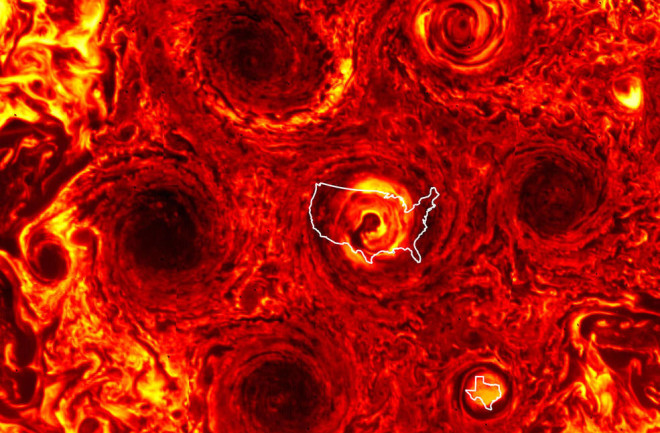Juno, a NASA spacecraft that has been orbiting Jupiter since 2016, has discovered a huge new cyclone at the gas giant’s south pole. It's the sixth in what's now a hexagonal array of cyclones surrounding one central storm at the pole.
Scientists announced the discovery Thursday at a meeting of the American Geophysical Union in San Francisco.

